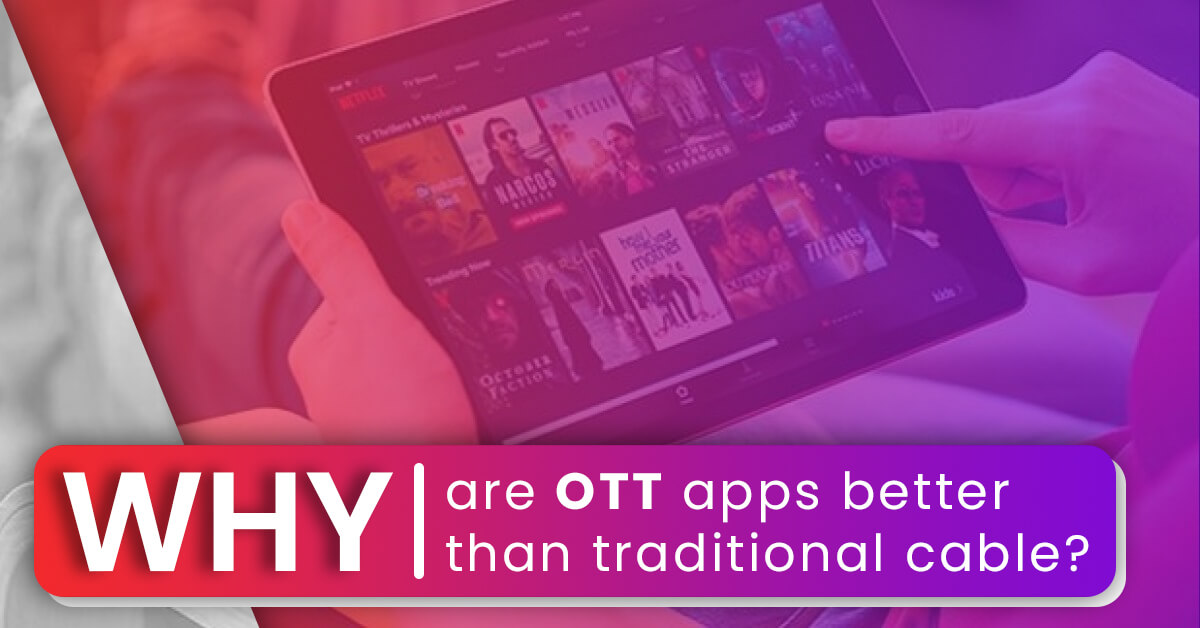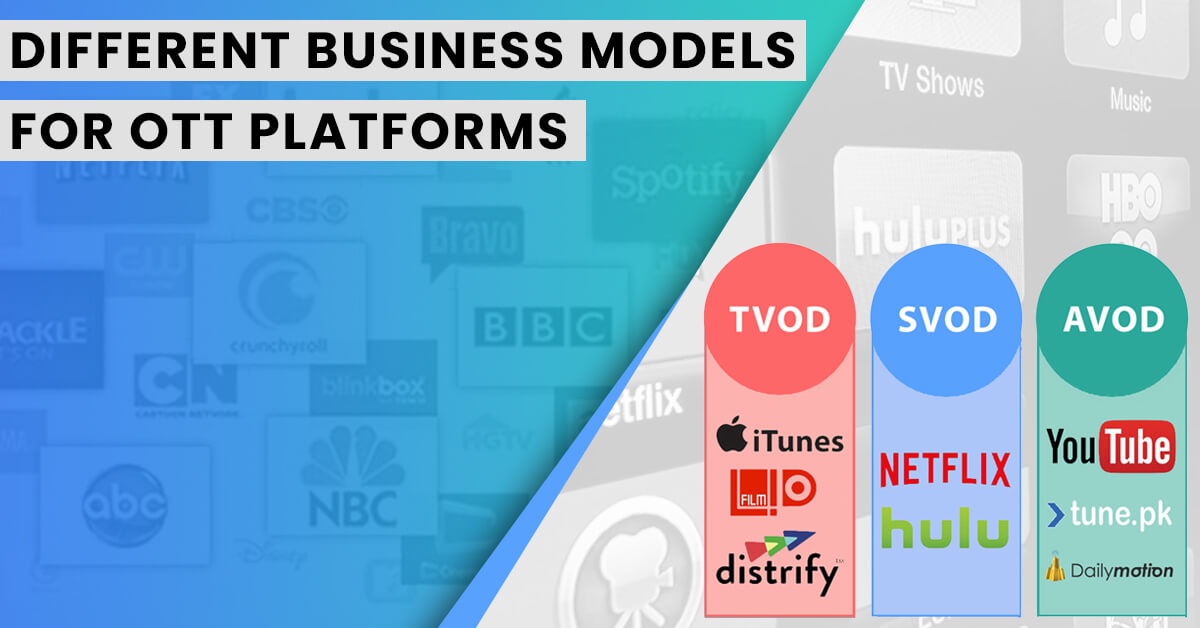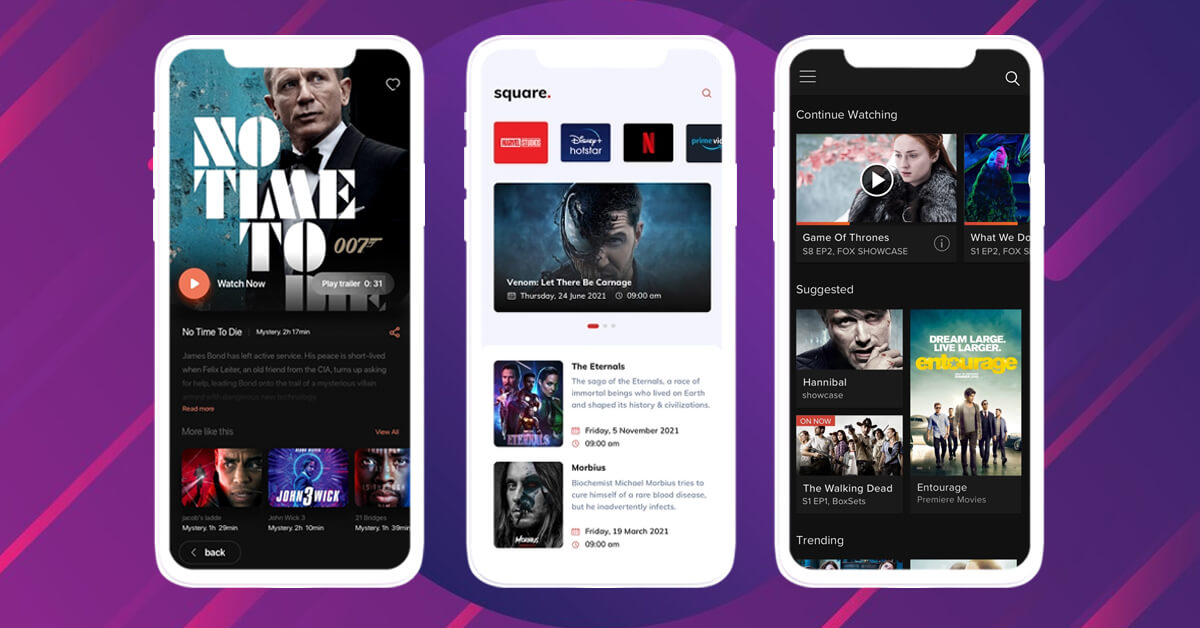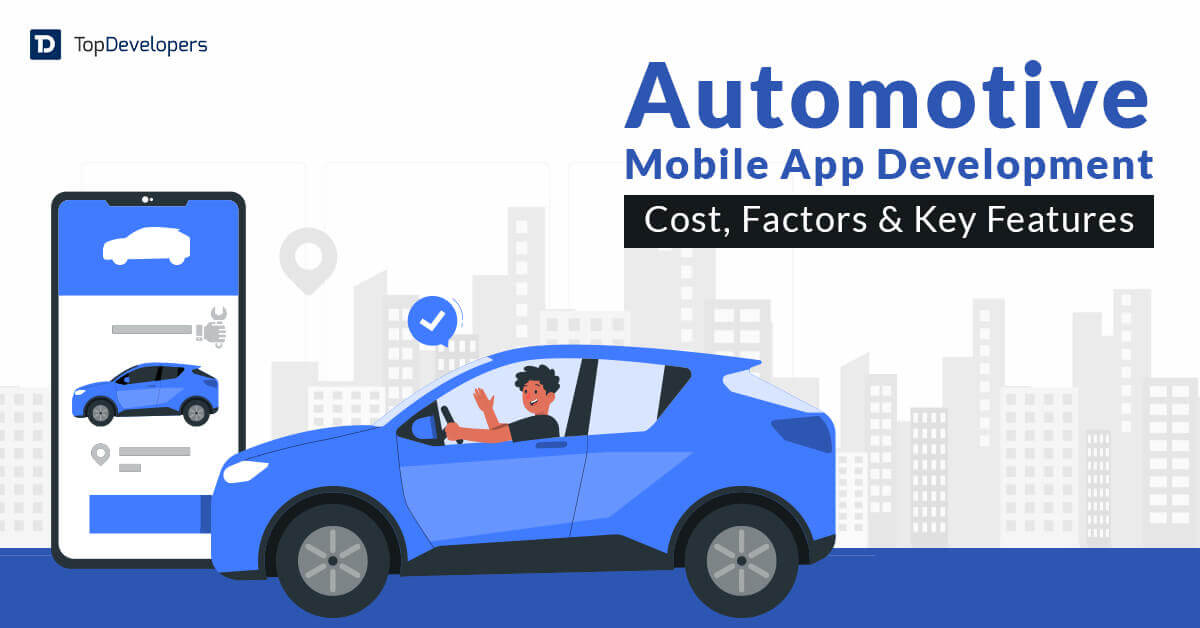
With the digital media revolution brought to the universe by OTT video streaming services, it seems the days of sitting across the TV to view the broadcasting show followed by a couple of ads in between are gone. Now, TV is turned into a smart TV that streams personalized content that users want to view. Thanks to technological advancements, any digital device can be turned into a screen to watch videos.
As per Statista, the number of users of OTT videos worldwide from 2020-2029 is increasing at a phenomenal speed. The ‘OTT Video’ segment of the media market was forecast to continuously increase between 2024 and 2029 by in total of 997.9 million users (+25.46 percent) and it is estimated to reach around 4.9 billion users in 2029.
If you as a start-up are impressed with the immense success (revenue) that OTT giants gained with OTT video streaming apps and want to play catch up with existing players with video streaming app development, the guide will help you know everything extensively.
Take a deep dive into the OTT video streaming service guide to know the benefits of OTT app development, business models, key features and functionalities, and leading OTT service providers to the detailed OTT development cost.
Table of Contents
- What Are OTT Services?
- Importance of OTT Video Streaming App Development
- Why Are OTT Apps Better Than Traditional Cable Services?
- Leading OTT Video Streaming Applications
- Different Business Models for OTT Platforms
- What Is the Process to Develop an OTT Streaming Service App?
- Key Features to Be Added in an OTT Video App Development
- How Much Does It Cost To Develop an OTT Video Streaming App?
- Conclusion
- Frequently Asked Questions About OTT Video Streaming App
- What is an OTT platform?
- What is the world’s largest OTT platform?
- How is OTT Replacing Traditional Media Streaming?
- How To Start a Successful OTT Streaming Service?
- How do OTT services operate?
- How can I develop an OTT video stream app?
- What are the advantages I reap with OTT platform development?
- What are the revenue models for OTT service applications?
What Are OTT Services?
OTT (Over-The-Top) video streaming services refer to applications that deliver video content directly to viewers over the internet, bypassing traditional cable or satellite TV services. These services provide users with the ability to stream video content on a wide range of devices, such as smartphones, tablets, smart TVs, laptops, desktop computers, and more.
OTT video streaming has gained immense popularity due to its convenience, flexibility, and access to a vast library of on-demand content. The access to personalized, original content becomes accessible to users on a subscription basis. It provides flexibility to view content offline with a complete control viewing experience (pause, rewind, resume, and fast-forward).
Importance of OTT Video Streaming App Development
OTT video streaming apps help advertisers get their ads to the millennials. A study by Deloitte concludes that an average U.S. household has around 3 VOD (Video On Demand) subscriptions. This data suggests that the audience size for OTT is already pretty large, and experts expect the number to grow larger as streaming services expand rapidly worldwide.
The pandemic has changed user behavior in terms of the content they consume. Along with mobile gaming, OTT video streaming platforms like Netflix have been the biggest beneficiaries of this change in customer behavior. OTT web apps provide brands with a massive opportunity to reach a wide array of audiences and tap new revenue sources. Businesses cannot ignore the power of OTT services with the future generation of consumers flocking to OTT applications.
Audience segmentation is a perennial problem that marketers face. OTT platforms allow for much better audience segmentation. There are very niche platforms like sports streaming services or platforms serving cartoon content with a much more defined demographic.
Professional marketers can target specific user profiles on OTT apps with ads using dynamic ad insertion. Using data analytics of the Entertainment Industry, expert digital marketers Agency can measure audience engagement levels to go for performance-based advertisements on OTT platforms. OTT streaming apps help marketers understand customer personas and motivations. It is essential to understand customer personas, motivations, and the correct time to present an offer in the digital era.
OTT streaming app development allows marketers to link technologies and use real-time data analysis to obtain new leads and follow the old ones. OTT apps help advertisers generate a higher ROI from their advertisements. The higher ROI is a result of improved audience engagement because of more targeted advertisements.
Why Are OTT Apps Better Than Traditional Cable Services?
Convenience
OTT video streaming apps allow users to stream anywhere. This is a very important benefit as compared to regular cable television which does not provide such freedom to the user. Moreover, in the case of TV, conflict arises when different members of the family want to watch different content at the same time.
For example, some people might want to watch cartoons while others might want to watch sports or any other program at a particular time. With OTT apps, individuals can watch their favorite content without disturbing other members. The user just needs a stable internet connection to stream the OTT content on their devices.
No Ads
Commercial advertisements are a big turn-off for most users. Traditional TV services thrive on advertisement revenue, hence it is very difficult to part with this income in exchange for better user engagement.
OTT app development has opened up the possibility for ad-free content as the users pay for the subscription service and the number of users using OTT services is expected to be much larger as compared to those using cable services. The number is big because earlier a single cable connection would suffice for members of a family, but now each member can take up different OTT subscriptions. This is the reason why OTT platforms are investing heavily into acquiring new customers and not boring the customers with advertisements because they know that the growth opportunity is huge with Over-The-Top streaming services.
Customization Options
With OTT streaming apps, the choice of content depends on the viewers as they are not limited to whatever is being broadcast at that moment. The viewers can customize their viewing experience to the content of their choice from the titles available.
Leading OTT Video Streaming Applications
There are many popular OTT mobile apps all across the world. The popularity of OTT video streaming services has risen to astronomical levels after the pandemic and the trend is not showing any signs of fatigue. Because of this sudden rise and demand for OTT in the entertainment industry, many OTT streaming platforms became very popular.
Let us know some of the leading OTT video streaming apps that are popular in the entertainment industry.
- Netflix
- Hulu
- Apple TV
- Peacock TV
- Disney+ Hotstar
- Amazon Prime
Different Business Models for OTT Platforms
There are many monetization models available that help to generate revenue for OTT platforms. Hence, Before developing an OTT video streaming app, one has to decide the kind of video streaming revenue model that the app will work upon.
There are three major types of Video-on-Demand (VOD) models, namely;
AVOD
AVOD is an Advertising-based video-on-demand model for OTT video streaming apps. It is an Advertisement-centric content delivery network. This type of VOD business model depends upon advertisement revenue to cover the cost of producing content. YouTube is the best example of the AVOD model as it has moved its subscription-based Premium content to an ad-based model.
TVOD
TVOD stands for Transaction Video On Demand model. In this type of VOD service, the users have to pay-per-view to watch their favorite videos on online video platforms (OVPs). Apple’s iTunes, Sky Box Office, and Amazon’s video store are some of the TVOD service providers.
SVOD
SVOD also known as the Subscription video on-demand model, is the most popular form of VOD business monetization model. This type of model is used by most VOD service providers such as Netflix, Hulu, HBO Max, Amazon Prime, and so on. In this model, the subscribers pay a fixed amount of money to be able to view the full range of their video content offering for a particular period of time.
What Is the Process to Develop an OTT Streaming Service App?
Building an OTT app is not an overnight process. It is a thoughtful and strategic method that involves logic, market research, and the pulse of the viewers about what will work among tough competitors. If you want to be a big fish in the pond, you need to plan bigger and foolproof it by reading and implementing every single step written in this guide.
Let’s get on to the steps to build OTT app development process:
Plan
Planning is the pillar of OTT app development process. It is a strategic blueprint of your project. In this phase, you need to outline the app’s concept by keeping target audience in mind. Also, you need to jot down what content and technical requirement will arise for OTT streaming app development process now and later. The initial step of gathering information about the market trends and consumer demands, you need to ensure a structured approach to build a user-centric streaming app.
Design
The design stage is where the base of an OTT platform is built. It includes crafting a user-centric design to ensure that the audio-video streaming service providing app has intuitive navigation and a plan for scalable content delivery. This stage is essential to define the overall UX and set the next step for technical development.
Development
Here, in this technical stage, OTT application developers work on building the platform’s basic infrastructure. Hence, this phase includes coding or programming the OTT app and setting up the database while integrating streaming protocols. Your development partner will also insist on taking stringent security measures to protect user data and keep unauthorized access at bay.
Deployment
This phase is all about deploying the OTT app to some network or satellite and keeping it up and running flawlessly. It includes server setup content deploying and final release to viewers or customers. Stringent app testing is carried out to ensure that the OTT streaming platform operates smoothly without any glitches.
Maintenance
Mobile app maintenance is an equally important factor is to keep your OTT alive and kicking to serve viewers flawless entertainment. Post-launch, OTT application platforms need ongoing maintenance in the form of updated content, refined features, and addressing any concerns or fixing bugs. Regular monitoring and user feedback are highly required to maintain a top-quality OTT app.
Key Features to Be Added in an OTT Video App Development
One can think of including the following features while developing the best OTT video app.
Search Bar
Users do not have time to scroll through all the available titles in an OTT app. A search bar feature that would allow them to search for their favorite titles of Shows, Movies, Series, and more, could prove to be a great user-friendly feature for a video streaming application. It should also provide an option to segregate the content according to various genres. A top mobile app development company can help to add such an important feature to the OTT video streaming app.
User Profile
A user profile feature would help the OTT apps to personalize the user experience. The users should add their favorite titles, rate and review the titles that they have watched and download the content to view it later. The data that the users generate in their user profile would help the Over-the-Top Video Streaming platform to identify each user’s unique taste and suggest content accordingly.
Multilingual Content
Having multilingual content will provide a definitive edge to the OTT video hosting platform over the competitors. Content that proves to be a hit in one language typically generates interest across the world, and users would love to watch the content in their native language. Netflix’s original series “La Casa de Papel” aka Money Heist’s shining success story, is a prime example of a video series breaking the language barriers. The series was watched by over 44 million households worldwide, which makes it the most-watched international Netflix series in a non-English language.
Globalization has improved the flow of content between countries, and people are now more open to consuming content from other cultures. The popularity of Korean and Japanese T.V. shows all over the globe is an example of this phenomenon. An OTT mobile and web app should have a multilingual app development approach to reach wider audiences.
Multi-Platform Compatibility
For any OTT service provider to achieve worthwhile success, it must provide multi-platform compatibility. In the digital era, users have many devices like smartphones, tablets, smart TVs, and laptops. Users want the freedom to experience their favorite content on the device of their choice. An OTT app should deliver a seamless experience on all popular devices and platforms to achieve success.
Watch List
A watch later list can prove to be a great way to retain viewers on the OTT platform. An OTT app’s success depends on binge-watching, and there is no better way to encourage users to binge-watch than to keep a handy ready-to-watch list and notify them with push notifications about it.
Social Sharing
A social sharing feature in an OTT application will enhance the engagement level of the app with its users. The app users should be able to create stories about their favorite shows or discuss the show on various social media platforms. The app users should be able to share some videos like trailers on their social networks. This way, the users will feel more connected with their favorite shows which will help boost the popularity of the OTT apps.
Screen Mirroring
The screen mirroring feature will help the users watch their favorite shows on their TVs and desktops without any hassle. The screen mirroring feature will increase the reach of the OTT video streaming app as many people like watching their favorite shows on the big screen. The users can implement the screen mirroring feature through Amazon fire stick, Google Cast, and AirPlay.
How Much Does It Cost To Develop an OTT Video Streaming App?
The cost to build an OTT video streaming app ranges between $20,000 to $400,000. Whenever video streaming app developers consulted for price estimation, they are found saying that estimation depends on several factors such as platforms, frontend, backend, developers’ rate, and support and maintenance.
The app with basic features such as video playback, user accounts, video search, content library, and video recommendation costs around $40,000. It surges to $100,000 when advanced functionalities such as live streaming, support for multiple devices, personalization, advanced search, parental controls, and others are added. Let’s view the cost breakdown of an advanced OTT video streaming application that leading video streaming app developers provide.
Frontend Development Cost
The appealing UI/UX design of an OTT app improves user engagement and loyalty. However, the intuitive design that intrigues the users, at first sight, comes at a cost. Typically, the frontend design consumes $100 hours which results in $30,00.
Here are the factors that include front-end development costs.
| Parameter | Cost |
|---|---|
| UX research | $5,000- $10,000 |
| Wireframing | $2,000-$3,000 |
| Prototype creation | $2,000-$5,000 |
| Content strategy | $2,000-$8,000 |
| Animation | $3,000-$5,000 |
Backend Development Cost
A robust backend development is required to power OTT platforms so that video streaming continues without a glitch.
Major components that are built under the backend development umbrella along with their cost are-
| Parameter | Cost |
|---|---|
| CMS | $15,000-$30,000 |
| Server streaming | $10,000-$20,000 |
| Authentication system | $5,000-$10,000 |
| Payment gateway integration | $3,000-$5,000 |
| Server infrastructure | $5,00-$1,000 |
| DBMS | $3,000-$5,000 |
| API development | $100-$600 |
Developers Cost
A large portion of OTT video streaming app development cost goes into paying amounts to different members of the development team. The video streaming app developers’ expenses depend on the number of developers and their seniority and specialty level.
Take a glance at the cost that team members are paid for a 6 months project.
| Type of developer | Cost |
|---|---|
| Frontend developer | $30,000-$35,000 |
| UI/UX designer | $25,000-$40,000 |
| Backend developer | $25,000-$50,000 |
| QA and testers | $15,000-$30,000 |
| Project manager | $30,000-$50,000 |
Maintenance and Support Cost
The OTT video streaming app needs regular maintenance and support services to perform to the notch forever.
The developers perform various tasks from bug fixing and rendering updates to continuous testing and other services whose cost ranges in the following ways-
| Maintenance and support tasks | Cost |
|---|---|
| Bug fix | Depends on number of fixes done. |
| Updates | $6,000-$60,000 |
| Server and infrastructure | $5,000-$20,000 |
| Testing | $2,000-$5,000 |
| Analytics | $2,000-$4,000 |
Conclusion
The market overview of OTT streaming services after the pandemic clears up that video content consumption through OTT has become a new norm. jumping on this bandwagon presents a plethora of opportunities for new entrants despite the market being saturated. An in-depth look at the OTT video streaming app development cost determines the budget that entrepreneurs need to set aside to increase revenue. Besides, features, business models, revenue models, and examples of leading OTT service providers give insights into how businesses can remain competitive in the crowded market.
Plan everything carefully, consider the guide, and partner with a reliable video stream app development company to get build an amazing OTT video streaming service app at competitive rates.
Frequently Asked Questions About OTT Video Streaming App
What is an OTT platform?
OTT stands for ‘Over the Top,’ and it is a streaming service that delivers content right on the internet. Such a method bypasses traditional media distributing networks such as satellite TV or cable. In recent years, OTT apps and platforms have witnessed a sharp upsurge in use worldwide and terabytes of content have been uploaded every single day making a paradigm shift in the delivery of audio-visual content. In the coming days, as experts believe, there won’t be any cable TV content delivery as everything will be taken over the OTT and internet-based media delivery.
What is the world’s largest OTT platform?
According to Digital Trends, Netflix tops the list of streaming services in the world with a whopping 247+ million subscribers followed by Amazon Prime Video totaling 200 million. The third is Disney+ with 150+ million subscribers and then come Max and Paramount + with 95+ and 63+ million subscribers respectively.
How is OTT Replacing Traditional Media Streaming?
OTT platforms are likely to supplant traditional media as the former ones offer on-demand content and diverse movies, web series, and documentaries from all genres. Moreover, OTT platform content is accessible in all types and sizes of devices and screen sizes on the go. With convenience and variety, OTT platforms are gaining immense popularity.
How To Start a Successful OTT Streaming Service?
You need to identify a niche or genre to create compelling content. Define a business model and find the best OTT app development company. Leverage analytics, secure content, and maintain your OTT platform regularly – this is the key to a successful OTT streaming service.
How do OTT services operate?
OTT service operations is a resourceful task that involves broadcasting videos over the internet that requires an in-house server or cloud-based server, video CMS, video streaming player, and more to work.
How can I develop an OTT video stream app?
Partner with an OTT video stream service app development company that helps you get customized OTT apps with lifetime ownership, various hosting options, and more.
What are the advantages I reap with OTT platform development?
The business benefits of building an OTT platform include- improving accessibility to video content, meeting users’ personalized needs for video content, acquiring and retaining users at scale, and increasing user outreach with a global presence.
What are the revenue models for OTT service applications?
OTT service application helps businesses to earn billions of dollars with SVOD, AVOD, TVOD, SSAI, Catch-up TV, and promotions.
 Derek Cohen
| Sep 23, 2024
Derek Cohen
| Sep 23, 2024
Analyzing business activities and data to formulate the best business development ideas is where I earn appreciations and remunerations. I’m an ardent reader, business adviser, gadget aficionado and an amateur yet an avid writer. My urge for innovative writing evokes every time I come across new gadgets, neo technology and novel technical events.





